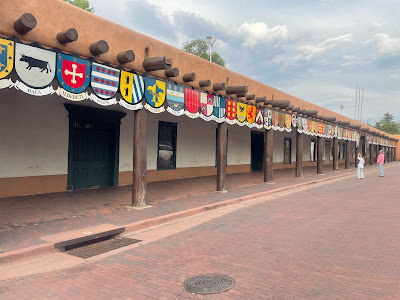I first came to Grand Forks in early January 1974. Imagine me living in tropical Singapore all my life, never own a jack because it never gets below 70F in Singapore, then landing in Grand Forks right smack in the middle of winter. I get asked this question a lot: "Why North Dakota(ND)?" I came here to attend the University of North Dakota (UND) because I met a mutual friend in Singapore who studied here. My big criterion is whether I can support myself through four years of college because my family is too poor to pay anything for me. The answer from my friend is that yes, you can work on campus and support yourself.
With about US$1,000 in my pocket I just had enough for the first semester of school. I remember out-of-state tuition was about $562 so the rest went to room and board in the dormitory. A few days after I arrived I asked people I met where I can find a job. By US Immigration Rule I was only allowed to work on-campus. I was told to call a Paul Clark, who ran Plant Services for the university. I called Paul and he told me to meet him at the Winter Sports Arena at 10pm on a Friday night. He told me we would be cleaning up after a hockey game. The pay? $1.80 an hour.
Over the next 3 1/2 years I'd work several low-level jobs: dishwasher, custodian, janitor, waiter, etc. The official minimum wage was $2.30 an hour but since they are university jobs, they were allowed to pay $1.60 an hour. In the summer I worked full-time to save enough money for the coming school year. I scraped with barely enough to spare. There was no life-line for me. Either I swim or I sink.
My focus, though, is getting a degree. Specifically, a degree in Mechanical Engineering. This is why I am in Grand Forks in September 2022, for the 45th Reunion of the Mechanical Engineering Class of 1977. Most of my classmates were from small farm towns in ND. Most have never met or met very few foreigners in the 70s'. I was truly a foreigner. I look different. I speak different. I act different. They didn't know how to treat me or talk to me.
It's a different world today. Some have had jobs that took them around the world. Many had interactions with others from different backgrounds. Mostly, all of us had matured and have a different outlook. This time around they felt more comfortable talking to me. We had many opportunities to mingle and catch up on our lives. There are only 13 out of about 20 who graduated, attended the reunion.
First, we had an Open House with the Mechanical Engineering students. It is nice to see so many interested in studying engineering. They have many questions about what it's like out there in the workforce. How to be successful. We toured the Engineering Labs. We also toured the remodeled Memorial Union, a center for student activities.
 |
| Tour of the ME Shop |
 |
| The newly remodeled Memorial Union |
On the second day we toured the
School of Aerospace Sciences. This program offers majors like Air Traffic Management, Aviation Sciences, Commercial Aviation, Unmanned Aircraft Systems Operations, etc. It is a nationally known program and attracts students from all over the world.
 |
| A Drone Instructor |
 |
| Drone Workshop |
Finally, we had a tour of the Ralph Engelstad Arena, the University's hockey arena. It is named after Ralph Engelstad, who played briefly for UND and went on to make his fortune in the casino business in Las Vegas. UND's team, formerly known as the Fighting Sioux, now the Fighting Hawks, won 8 NCAA Division 1
Hockey Championships.
 |
| Ralph Engelstad Arena |
I will be remiss if I don't mention UND's best known athlete - Phil Jackson, best known for coaching the Michael Jordan-led Chicago Bulls and the Shaq and Kobe Bryant Lakers. He won a total of 11 NBA Championships.
However, the highlight of the trip has to be a visit to a farm. In my almost 4 years in Grand Forks I've never visited a working farm. A classmate learned that we were interested in learning about farming in ND. So he took us to visit a sugar beet farm. Many Americans are not aware that almost half of the sugar produced in this country come from
sugar beets. Most think that sugar comes only from sugar cane.
Kevin, our farmer, runs a 500-acre farm, growing sugar beets, soy beans and other crops. When we visited him the sugar beets were almost ready for harvest. He showed us his farm equipment, how they work, and dug up a sugar beet to show us what they look like.
 |
| What a sugar beet looks like |
 |
| Farm Tractor |
 |
| The Harvester |
 |
| Look at the size of the tractors |
 |
| Farmland in the middle of North Dakota |
The farm is highly mechanized. They have GPS to guide where they go. Even with such a big farm, there are only 2 people running it full-time. During harvest season they hire migrant workers to help with the harvest. They harvest around the clock and is finished in about a week.
After harvest they take the sugar beets to a nearby factory where they are process into sugar crystals. The factor is a cooperative, meaning all the farmers share in its operations. The farmers are paid based on how much they harvested.
Here is a YouTube video showing the harvesting and processing of sugar beets into sugar:




















